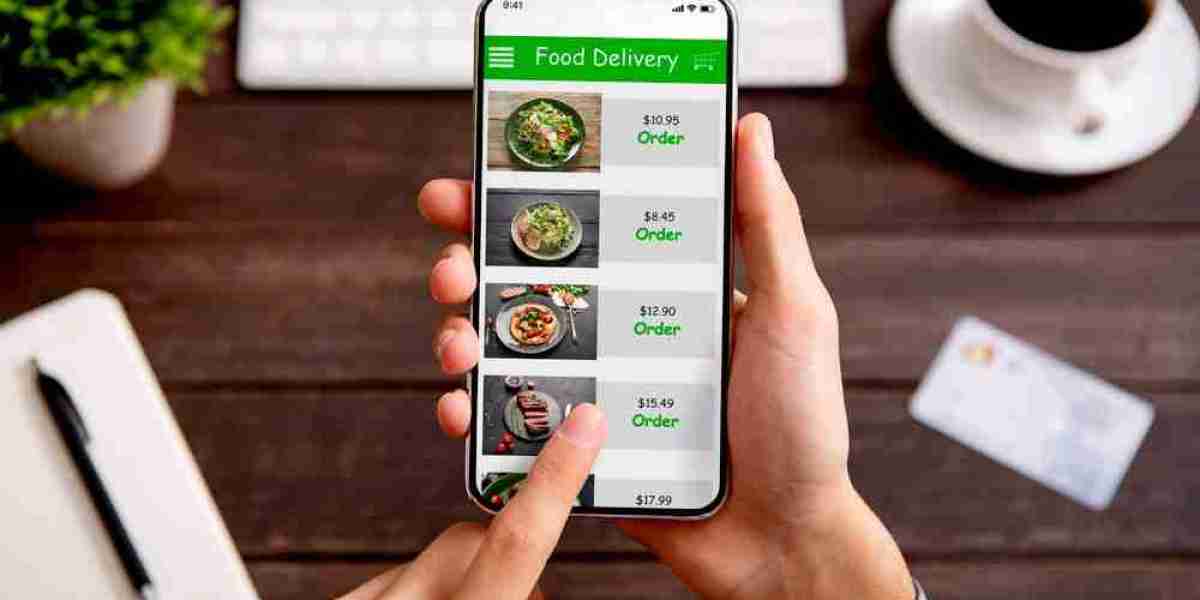In today's fast-paced world, technology has become an indispensable tool for streamlining processes and enhancing efficiency across various industries. The restaurant sector is no exception, where the integration of web applications has revolutionized the way customers place orders and how businesses manage their operations. In this blog post, we'll explore the significance of Web Apps for Restaurant Ordering and how they contribute to a seamless dining experience for both customers and restaurant owners.
Understanding the Need for Web Apps in Restaurant Ordering
The traditional method of taking orders in restaurants often involves paper menus, verbal communication, and manual entry of orders into a POS system. While this approach has been effective to some extent, it is prone to errors, delays, and inefficiencies, especially during peak hours. Additionally, the COVID-19 pandemic has highlighted the importance of contactless solutions to ensure the safety of both customers and staff.
This is where web apps for restaurant ordering come into play. By leveraging the power of the internet and mobile devices, these applications allow customers to browse menus, place orders, and make payments seamlessly from their smartphones or tablets. For restaurants, web apps offer a centralized platform to manage orders, track inventory, analyze customer preferences, and streamline operations.
The Benefits of Web Apps for Restaurant Owners
Improved Efficiency: Web apps automate the ordering process, reducing the need for manual intervention and minimizing errors. Orders placed through the app are directly integrated into the restaurant's POS system, eliminating the need for manual entry and reducing order processing time.
Enhanced Customer Experience: With a user-friendly interface and intuitive design, web apps make it easy for customers to browse menus, customize orders, and track their delivery or pickup status in real-time. This convenience enhances customer satisfaction and encourages repeat business.
Streamlined Operations: By centralizing order management and inventory tracking, web apps enable restaurant owners to monitor their business's performance, identify trends, and make data-driven decisions to optimize operations and maximize profitability.
Cost Savings: With fewer errors and improved efficiency, restaurants can reduce labor costs associated with order processing and streamline their operations, leading to overall cost savings in the long run.
Contactless Ordering: In the wake of the COVID-19 pandemic, contactless solutions have become essential for ensuring the safety of customers and staff. Web apps facilitate contactless ordering and payment, minimizing physical contact and reducing the risk of transmission.
Key Features of Web Apps for Restaurant Ordering
Online Menu: A comprehensive digital menu with high-quality images, detailed descriptions, and customizable options to cater to diverse customer preferences.
Order Customization: Allow customers to customize their orders according to their preferences, including options for special dietary requirements or allergies.
Real-Time Order Tracking: Provide customers with real-time updates on the status of their orders, including preparation time, estimated delivery/pickup time, and delivery driver tracking.
Secure Payment Gateway: Implement a secure payment gateway to facilitate online payments, including credit/debit cards, digital wallets, and other popular payment methods.
Customer Feedback: Incorporate a feedback system to gather customer reviews and ratings, allowing restaurants to improve their service quality based on valuable feedback.
Integration with POS Systems: Seamless integration with the restaurant's POS system to ensure accurate order processing and inventory management.
Case Study: The Success of XYZ Restaurant with a Web App for Ordering
XYZ Restaurant, a popular eatery in the heart of the city, faced challenges with order accuracy and efficiency during peak hours. To address these issues, they decided to implement a web app for ordering, allowing customers to place orders directly from their smartphones.
The results were remarkable. Not only did XYZ Restaurant experience a significant improvement in order accuracy and processing time, but they also saw an increase in customer satisfaction and loyalty. With the ability to track orders in real-time and customize their meals according to their preferences, customers were delighted with the enhanced dining experience offered by the web app.
Moreover, XYZ Restaurant was able to streamline its operations, optimize inventory management, and reduce labor costs, leading to improved profitability. The contactless ordering and payment feature also proved to be invaluable, especially during the COVID-19 pandemic, as it helped ensure the safety of both customers and staff.
Conclusion
In conclusion, Web Apps for Restaurant Ordering have become indispensable tools for modern dining establishments looking to enhance efficiency, improve customer experience, and stay ahead of the competition. By leveraging the power of technology, restaurants can streamline their operations, reduce errors, and adapt to changing consumer preferences.
Whether it's contactless ordering, real-time order tracking, or seamless integration with POS systems, web apps offer a myriad of benefits for both customers and restaurant owners alike. As the restaurant industry continues to evolve, embracing innovative solutions like web apps will be key to staying relevant and thriving in today's digital landscape.








